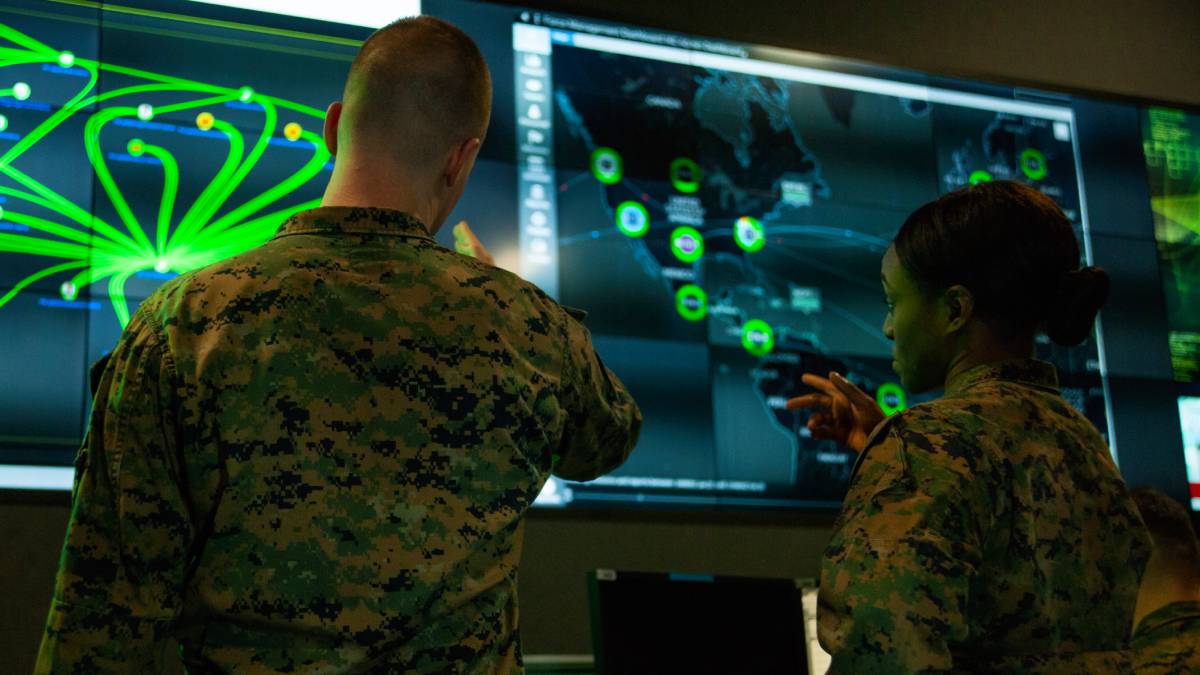 (Source: U.S. Department of Defense/Marine Corps Staff Sgt. Jacob Osborne)
(Source: U.S. Department of Defense/Marine Corps Staff Sgt. Jacob Osborne)
The new age of space includes a new age of warfare. Constellations spoke with Col. Michael Christensen, Director of Test and Evaluation of the U.S. Space Force, about the pioneering efforts to ensure the space enterprise can counteract emerging threats and maintain its strategic position in space.
Because systems on Earth used in battle rely so heavily on space, Christensen said the idea of space as a strategic environment has evolved as adversaries realize they can go after those systems to alter the order of battle and potentially tilt the scales in their favor.
“How do I make this system reliable and resilient so that I can effectively operate on the ground using it as a force multiplier without it being taken out?” Christensen asked. That is the importance of testing and simulations, he said, adding that the systems in space not only need to work but work in a contested environment.
“The threat is real. It’s increasing in scope, scale and complexity,” Christensen said. Current simulators were designed for a benign space environment and do not test for countering threats from a thinking adversary. “The Space Force demands combat-credible capabilities, proven and demonstrated, to protect and defend our way of life.”
Testing, Testing
The Space Force, through its National Space Test and Training Complex (NSTTC) and Operational Test and Training Infrastructure (OTTI), is focused on developing the capabilities to test and train systems and operators to be effective in conflict. That often means taking these systems to their breaking point.
Christensen related his experience as an F-16 test pilot, verifying flight envelopes and pushing aircraft to their limits so operators would know how to modify their tactics to make sure they work.
“We now have to take that same mindset to testing our space assets and confirm that can they have enough thrust to evade something, or have the ability to turn at certain altitudes or certain timings…
We need to understand those so that we can incorporate those in our tactics, procedures and techniques and train our operators.”
To support more advanced operations on orbit, the Space Force has adopted an integrated testing approach, or Integrated Test Force. This combines developmental testing and operational testing in a way that engages developers, operators, contractors, trained testers and even acquisition leads. Involving these stakeholders allows for changes and tweaks to be made earlier and cheaper in the cycle, versus waiting until the system is deployed.
“We’re trying to do it integratedly [sic] so that by the time the system gets on orbit, it works and functions as everyone thought it should,” Christensen said.
Christensen said they rely heavily on digital modeling and simulation. “We’re building up an infrastructure for testing where we’re taking our on-orbit assets and using those to inform our digital models so that we can ultimately test out and stress our systems in a digital environment before they’re even built.
Hiding Your Hand
Christensen only hinted at the capabilities Space Force is developing and utilizing in its test enterprise. The use of emerging technology to maintain a fighting force that’s second to none is like going to a poker game, he said. “You don’t want to play poker and have all your hands facing up.”
“We want to make sure that we can test the latest and greatest things that physics and science can bring us without necessarily revealing our hand.”
To test and train its systems and operators to be effective in conflict, Christensen said the Space Force OTTI uses a combination of physical infrastructure, digital structures and organizational processes.
While simulators can help verify if a system works properly, he said the ideal synthetic training environment includes aggressor forces that perform like a thinking adversary, “so that operators train like they’re going to fight.”
For more on Space Force testing infrastructure, leveraging commercial creativity and deterrence in the space domain, listen to the full podcast episode here.
